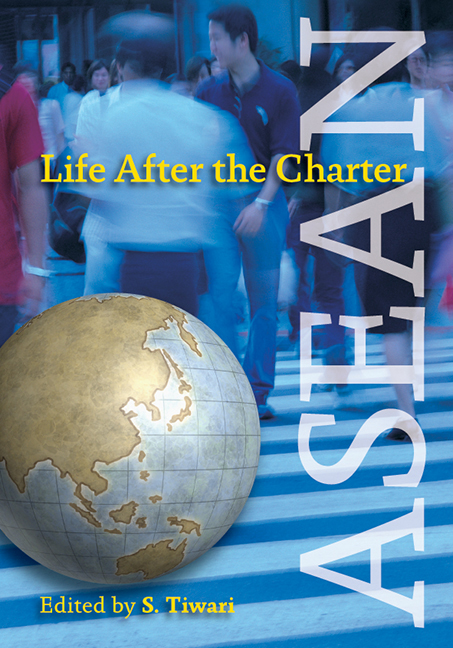Book contents
- Frontmatter
- Contents
- Foreword
- Preface
- List of Contributors
- Introduction
- 1 ASEAN Legal Personality under Its New Charter – Its Nature, Meaning and Implications: Status of the Work and Issues Involved
- 2 Does ASEAN Exist? The Association of Southeast Asian Nations as an International Legal Person
- 3 Life in ASEAN After the Entry into Force of the ASEAN Charter: Implications and Follow-ups
- 4 Translating the Design into a Bloc: The Domestic Implementation of the ASEAN Charter
- 5 ASEAN Trade in Goods Agreement (ATIGA)
- 6 The ASEAN Comprehensive Investment Agreement 2009: Its Objectives, Plans and Progress
- PRIVATE SECTOR PERSPECTIVES
- Index
5 - ASEAN Trade in Goods Agreement (ATIGA)
Published online by Cambridge University Press: 21 October 2015
- Frontmatter
- Contents
- Foreword
- Preface
- List of Contributors
- Introduction
- 1 ASEAN Legal Personality under Its New Charter – Its Nature, Meaning and Implications: Status of the Work and Issues Involved
- 2 Does ASEAN Exist? The Association of Southeast Asian Nations as an International Legal Person
- 3 Life in ASEAN After the Entry into Force of the ASEAN Charter: Implications and Follow-ups
- 4 Translating the Design into a Bloc: The Domestic Implementation of the ASEAN Charter
- 5 ASEAN Trade in Goods Agreement (ATIGA)
- 6 The ASEAN Comprehensive Investment Agreement 2009: Its Objectives, Plans and Progress
- PRIVATE SECTOR PERSPECTIVES
- Index
Summary
BRIEF BACKGROUND AND OBJECTIVE
ASEAN integration in the area of trade in goods had been governed by a number of separate regional legal instruments, such as (i) the Agreement on the Common Effective Preferential Tariffs (CEPT) Scheme for AFTA; (ii) the ASEAN Agreement on Customs (1997); (iii) the ASEAN Framework Agreement on Mutual Recognition Arrangements (1998); (iv) the e-ASEAN Framework Agreement (2000); (v) the ASEAN Framework Agreement for the Integration of Priority Sectors (2004); and (vi) the Agreement to Establish and Implement the ASEAN Single Window (2005). The newly elevated end goal of ASEAN economic integration to establish a single market and production base with free flow of goods by 2015 envisaged in the ASEAN Economic Community (AEC) Blueprint requires ASEAN to adopt a holistic approach by integrating the various existing trade-in-goods related initiatives and adopting new necessary measures into a comprehensive framework. To that end, the ASEAN Economic Ministers (AEM) at their 39th meeting in August 2007 agreed to enhance the CEPT Agreement into a more comprehensive agreement that would set up the disciplines to enable ASEAN to create the necessary environment for the free movement of goods within the ASEAN region. This decision led to the conclusion and signing of the ASEAN Trade in Goods Agreement (ATIGA) by the AEM, which was completed in February 2009.
THE HOLISTIC APPROACH OF THE ATIGA
As mentioned above, the ASEAN Trade in Goods Agreement is the first comprehensive agreement in ASEAN consisting of all necessary provisions to address all aspects related to the flow of goods within the region, ranging from liberalization (tariffs and non-tariffs elimination) to trade facilitation (customs procedures, trade procedures, standards and conformance procedures and sanitary and phytosanitary measures) and trade defence measures. The agreement also encompasses key principles in international trade such as non-discrimination (MFN treatment, national treatment) and transparency.
- Type
- Chapter
- Information
- ASEANLife after the Charter, pp. 89 - 99Publisher: ISEAS–Yusof Ishak InstitutePrint publication year: 2010

